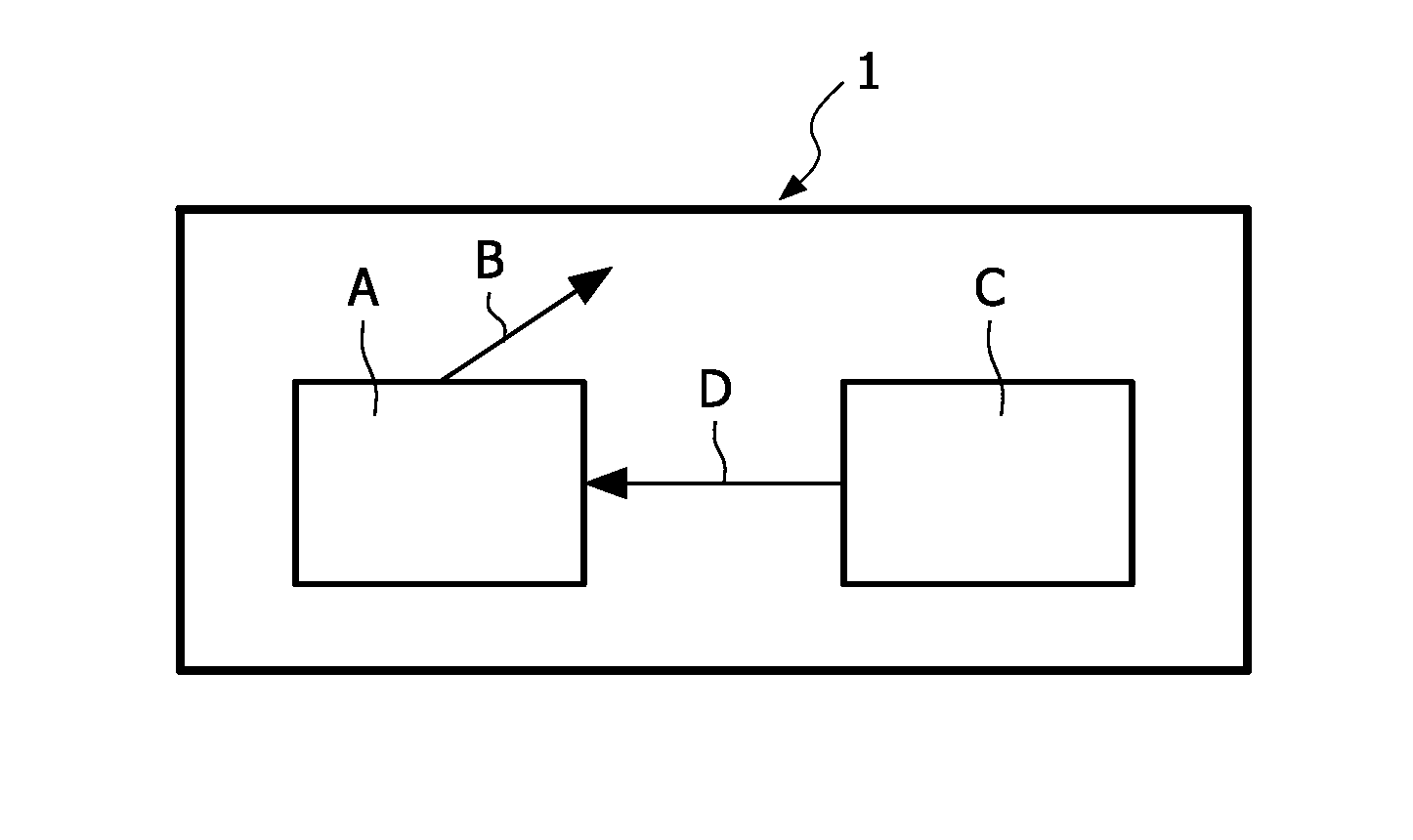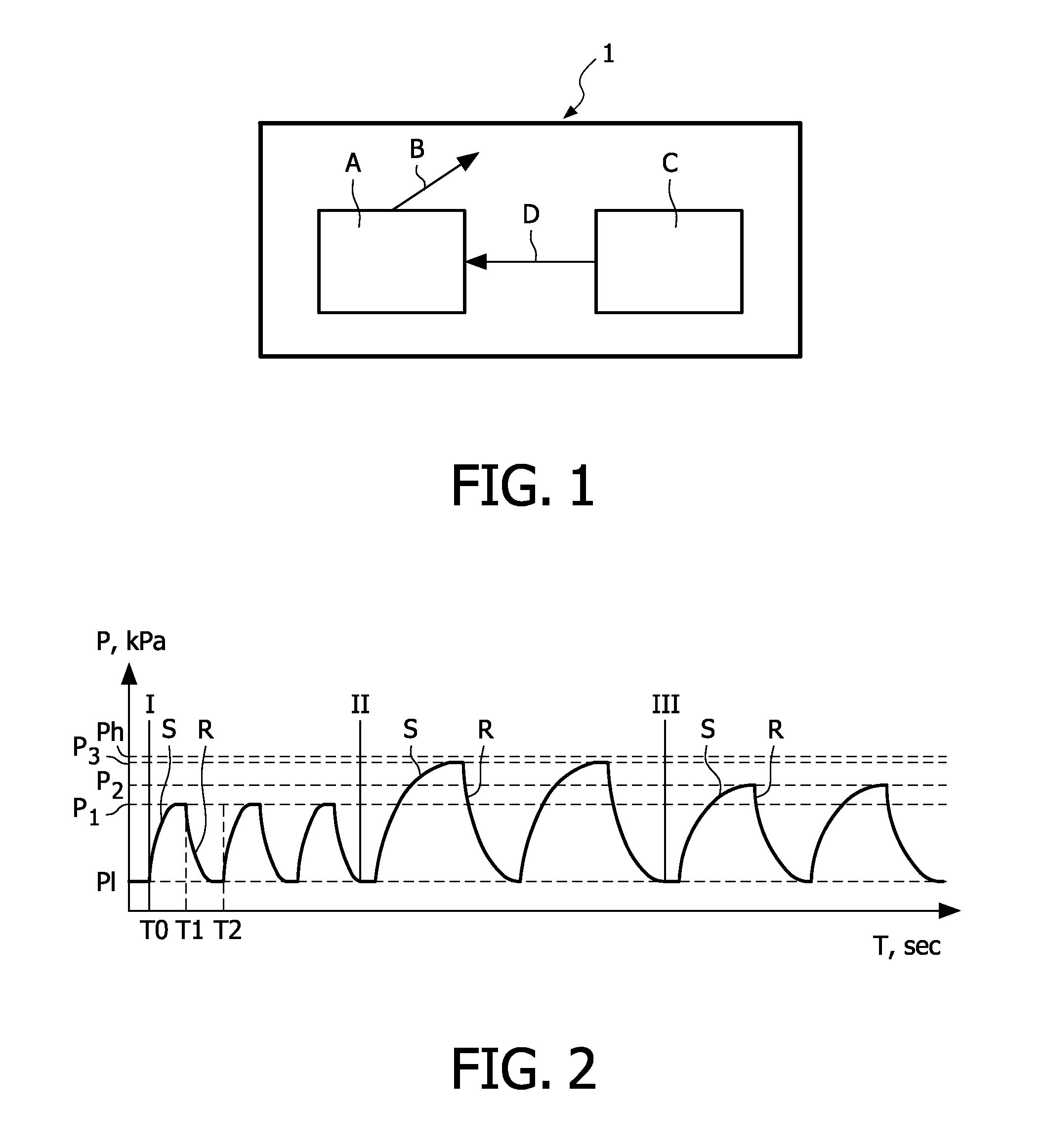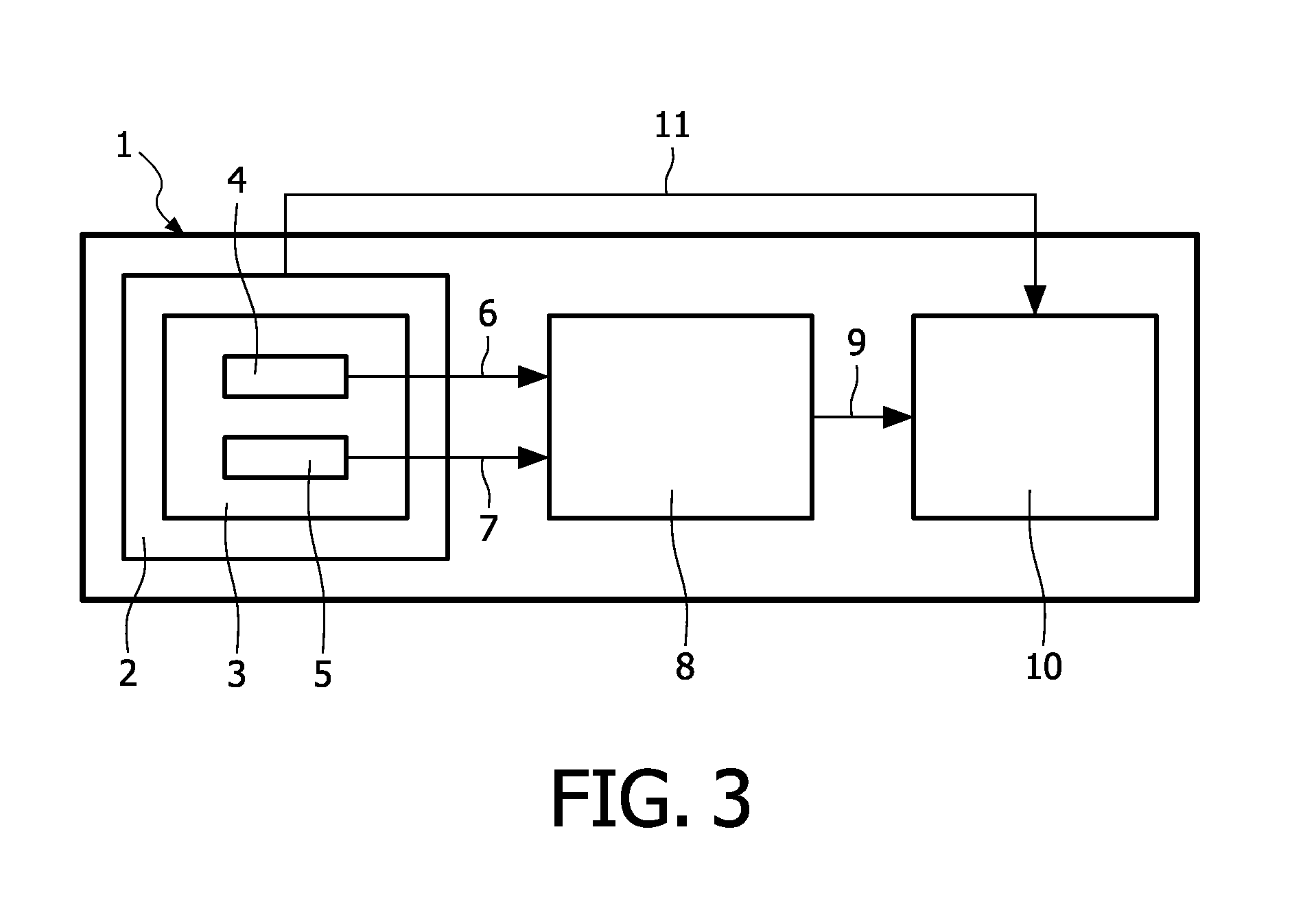[0004]To that end, an apparatus according to the invention is characterized in that the breast pump is adapted for optimising breast pump settings by actively controlling at least one breast pump pumping property, based on measurements of the at least one sensor, during a period of use of the breast pump, in order to personalise operation of said breast pump for a particular user. Because the breast pump is able to optimise breast pump settings based on measurements of the at least one sensor during the period of use of the breast pump, thus also before actual milk expression starts and after the milk expression decreases or ends, a breast pump that is adapted to personal characteristics of a particular user is provided. Such a breast pump provides the best settings by actively controlling at least one breast pump pumping property, based on measurements of the at least one sensor for said user during each stage of the actual period of use of the breast pump, in an easy manner without hurting the user and at the same time providing increased expressed milk quantity, milk quality and / or increased pumping efficiency. Thus, also during the period before the actual milk expression starts, the at least one pumping property is measured and based thereon, the pumping property may be actively controlled. In case the measured value does not comply with the desired value, the pumping property is actively controlled or adapted. The breast pump pumping property may for instance be the pumping power and / or the pumping frequency. It is clear that the at least one pumping property may be actively controlled during an entire period of use of the breast pump. But it is also possible that the at least one pumping property may be actively controlled during one or more parts of the entire period of use of the breast pump, for instance only during the period before the actual milk expression starts. Consequently, the accessibility to use said breast pump is increased considerably.
[0005]It may be advantageous, according to a further elaboration of the invention, that the at least one sensor is a pressure sensor adapted for measuring the negative pressure in the at least one breast cup, preferably in at least a space between said breast cup and the breast, during said period of use of the breast pump. Thanks to said pressure sensor it is possible to measure the pressure that is actually applied to the breast. The actual applied negative pressure on the breast depends on the suction power of the pumping system, but also on the other conditions, for example air leakage between the breast and the breast cup or on other locations in the fluid connection between the pumping system and the breast cup, or the amount of air in the cup. This may be different for every user, since the breast shape of each user and the way that the breast cup covers said breast can be different. By measuring the actual negative pressure applied to the breast during use of the breast pump, the user does not have to find out and try which are the optimal settings of the breast pump. Furthermore, it prevents damaging the delicate breast tissue, since it is clear, and not blurred by other factors, what amount of pressure is applied to the breast. Since a negative pressure is applied during the period of use of the breast pump, even before the milk flows, the user can be guided in applying the proper settings during said period of use. This results in an easy-to-use breast pump, even for inexperienced users.
[0007]In a further advantageous embodiment of the invention, the detection unit comprises at least a milk flow sensor that is adapted to measure milk output as a function of time and / or its average value over at least a few previous performed suction cycles. For instance, by measuring the applied negative pressure during a suction cycle and at the same time measuring the milk flow during said suction cycle, the efficiency of the breast pump can be further increased. By measuring the milk flow and analysing said milk flow in relation to the applied pressure, the settings of the breast pump can even better be determined.
[0008]According to another aspect of the invention, the detection unit comprises at least a sensor that is adapted for assessing at least one property of at least one biological particle of extracted milk. Such a sensor according to another aspect of the invention may comprise an electromagnetic sensor, a physical sensor, a biological sensor and / or the like. For instance, it is known that the electromagnetic properties of the milk are influenced by different parameters, for instance relating to the woman's health or to the milk quality. For example, in case of the occurrence of mastitis, the electrical conductivity of the milk will be increased. Conductivity of the milk can be measured by an electromagnetic sensor. It is also possible to measure density of the milk with aid of a physical sensor, to measure pH level with aid of a chemical sensor, to count cells with aid of a biological sensor or to measure other properties with other known sensors. Such determined information can be helpful to prevent or cure health problems and further optimise milk extraction parameters and increase extracted milk quantity and milk quality. It is possible that the milk flow sensor and said sensor adapted for assessing at least one property of at least one biological particle of extracted milk are combined in the same sensor.
[0011]According to a further elaboration of the invention, the control unit may then control the pumping system in dependence of the data output, for instance by adapting the pumping power and / or the pumping frequency in order to optimize the milk extraction and usage comfort.
 Login to View More
Login to View More  Login to View More
Login to View More 


